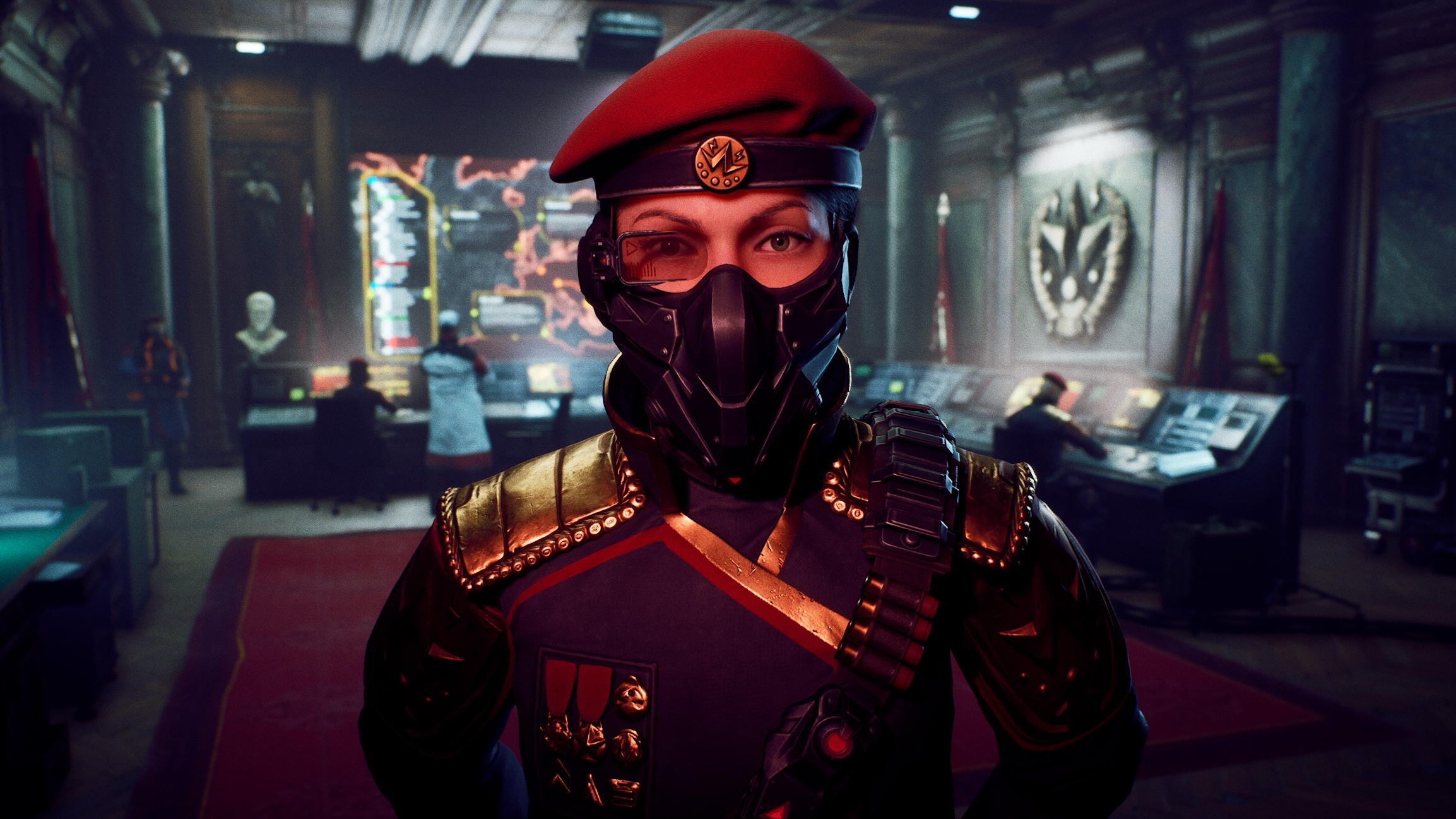
Calling Tempest Rising a spiritual successor to Command and Conquer would undersell just how fiercely this game wants to be a part of the Westwood dynasty. From the thinly veiled faction analogues to the thundering synth metal soundtrack, right down to the mission interludes where your faction's influence bleeds through the countries of Europe on the campaign map, Slipgate Ironworks' mimicry of Westwood's 1995 RTS is utterly brazen.
What is it? A self-appointed Command and Conquer successor with modern production values and a few mechanical tweaks.
Release date April 24, 2025
Expect to pay $40/£35
Developer Slipgate Ironworks
Publisher 3D Realms, Knights Peak
Reviewed on AMD Ryzen 5 3600, Nvidia 2080 Super, 32 GB RAM
Steam Deck TBA
Link Official site
Yet Tempest Rising does more than sneak into Command and Conquer's room and prance about in its clothes. It understands what made Westwood's RTS such a timeless classic, enriching those elements to suit a modern audience. Its RTS action is pacey and spectacular, its dual factions are tactically divergent and demonstrate surprising strategic depth. Most importantly of all, its twin campaigns are meticulously crafted pressure-cookers that spin out the strategic fundamentals in thrilling, imaginative ways. In fact, Tempest Rising isn't that far off being a classic itself.
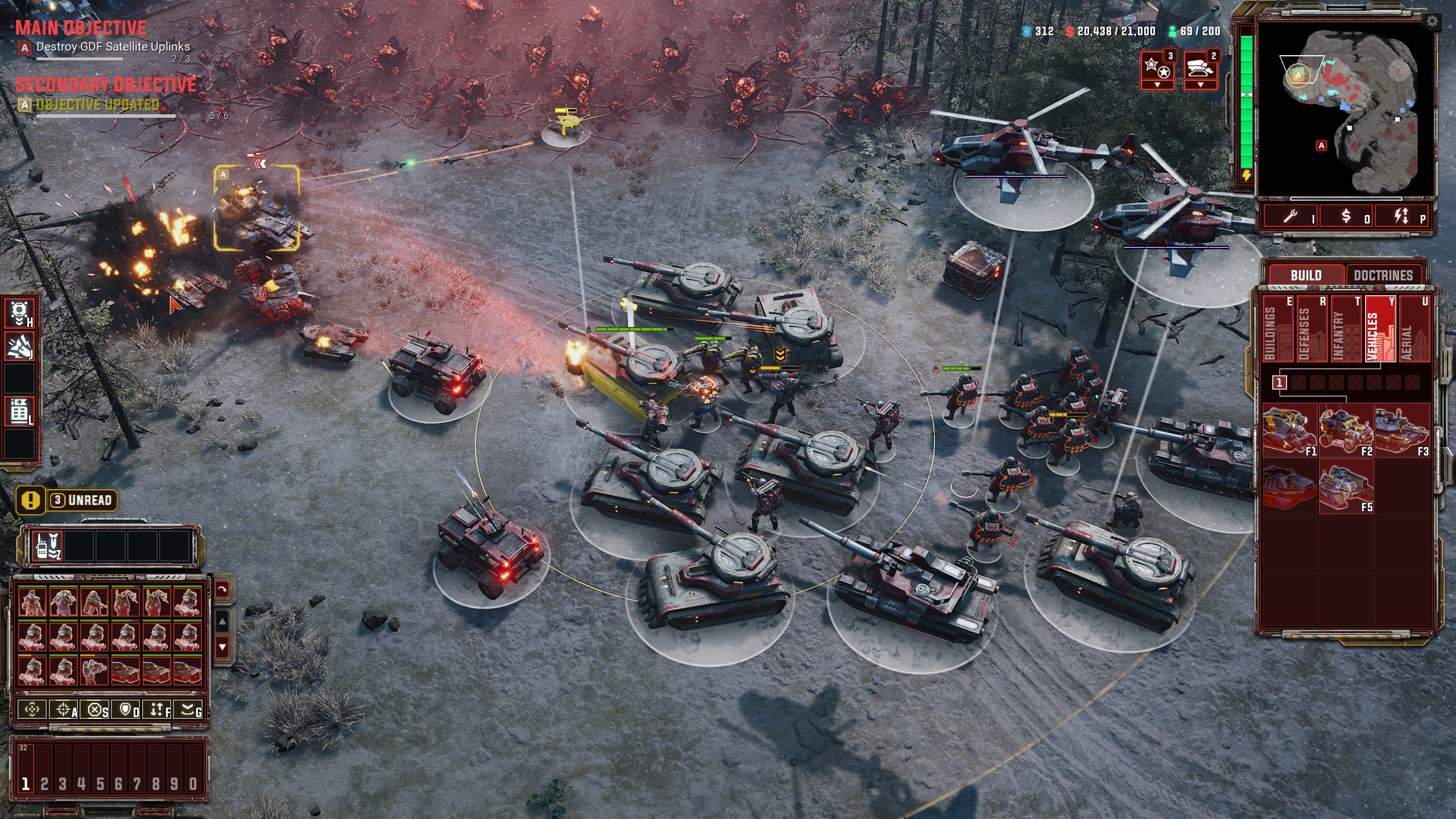
Tempest Rising's takes the premise of C&C, switches out a few proper nouns and chucks in a nuclear war for good measure. Set in 1997 in the wake of World War 3, the world has become afflicted by a strange new growth called Tempest, a russet, flowery structure that looks like a plant but isn't. Tempest is hazardous to human health and spreads rapaciously, but it's also an abundant energy resource. This makes it the primary catalyst of a war between Earth's two dominant factions, the Global Defence Force (GDF) and the Tempest Dynasty.
Likewise, the basic play of Tempest Rising will be familiar to anyone even vaguely accustomed with real-time strategy. You establish a headquarters in a corner of the map, harvest some resources, build a base, recruit an army comprised of infantry and vehicles, then dispatch that army to pummel your opponent. Tempest Rising doesn't alter these fundamentals in any radical fashion—it never intended to. But how you do these things is quite different depending on which faction you play as.
While the GDF and Tempest Dynasty are broad approximations of C&C's GDI and Brotherhood of Nod, there's considerably more going on in terms of how each faction operates. Virtually every action you perform in Tempest Rising works differently depending on the faction you play as. The GDF, for example, harvest resources using a refinery building that comes with its own tempest-gobbling dump truck, while the Tempest Dynasty uses a mobile harvesting rig with wheels that double as cute little cluster-robots when deployed.
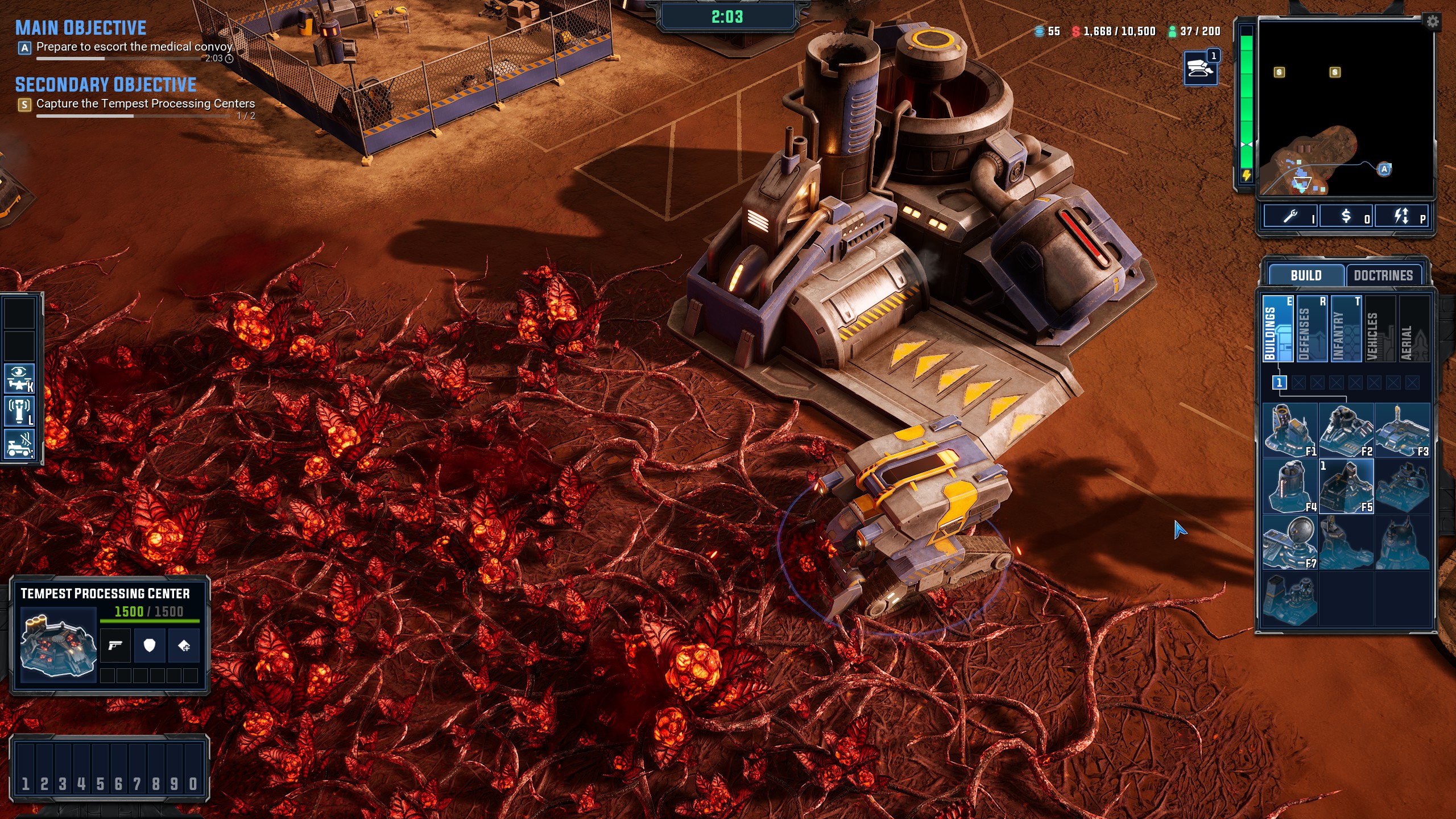
Even basic construction works differently for each faction. The GDF place building blueprints on the ground which then construct over time, whereas the Tempest Dynasty hark back to the original C&C, building their structures within the construction menu, then placing them on the ground where they assemble instantly. This means they're protected from being damaged during construction, but it also means you must be Johnny-on-the-spot when placing them, as queued buildings won't begin construction until you deploy completed projects.
This asymmetry is most important, of course, when it comes to units and combat. The GDF is built around advanced technology and intel gathering. Its ground infantry are supported by drone pilots which fire micromissiles against vehicles and aircraft, while its mechanised units are led by fast scout 4x4s that can mark enemy vehicles to provide bonus damage for tanks. The Tempest Dynasty, by comparison, have a more fire and fury approach to combat, with an army led by flamethrower infantry and supported by offroad SUVs that fire cluster missiles and devastatingly powerful mobile rocket trucks. But they also have access to some of the weirdest units of all, such as a giant metal sphere that instantly destroys small and medium units by rolling over them.
Indeed, there are some real treasures within Tempest Rising's unit roster. An obvious highlight from the GDF is the trebuchet, a heavy tank that transforms into an even more powerful stationary artillery cannon. Trebuchets are excellent defensive units, but they can also be devastatingly effective in the backline of an assault. My personal favourite, however, is the GDFs shieldmaiden, an anti-air hovercraft that quickly became an essential part of all my assault forces. Not only does its gatling laser make mincemeat of The Tempest Dynasty's slightly superior air units, but it can also deploy a repair capsule that will automatically fix up your units in the field.

Most units have an active ability like this, which are complemented by a small selection of faction-wide abilities you can use at any time. These can also be combined in powerful ways. For example, the GDF can recruit a specialist sniper unit who can turn invisible, letting her sneak up to enemy positions and pick off infantry targets. But the GDF can also call in an airstrike on any positions it has line of sight with. So you can effectively use the sniper to conduct one-unit bombing raids on distant enemy bases. Of course, you'll have to watch out for the Dynasty's machinist, as this specialist can detect enemy units in stealth.
There are some real treasures within Tempest Rising's unit roster
I could spend this whole review hashing out all the various abilities and combinations, but two things Tempest Rising is particularly good at are supporting armies within the field and empowering territory control. Both factions feature abilities that let them quickly establish small sub-outposts to claim key points on the map like tempest fields. The GDF can call down a beacon that lets them build anything within its radius while it's active, while the Dynasty can recruit a salvage van that can deploy as a small construction centre, which both lets you construct buildings and defence while automatically repairing them when damaged. This means the GDF can spring up a small outpost out of nowhere, while the Dynasty's can combine salvage vans with their harvesting rigs to spread across the map like a weed.
Hence, you're not just throwing clusters of units at one other's bases, with fights often encompassing large swaths of the map. And thanks to units like the shieldmaiden and the salvage van, which can be used as a mobile repair unit as well as a mini HQ, your armies are less disposable than in other RTS', though they can still be obliterated in seconds if you're not careful.

In short, beneath Tempest Rising's simple throwback exterior is a ton of more specific features and abilities you can take tactical advantage of. Admittedly, it can be difficult to remember all these nuances in the heat of battle, but Tempest Rising tries to assist you in a number of ways. Pressing TAB will cycle through different units in a selected cluster, letting you quickly find the unit with the ability you want. Similarly, holding ALT while clicking will cause all units in a cluster to move at the same speed, meaning your faster, more fragile units don't rush off and get blown apart by your enemy's defences.
The main way Tempest Rising readies you for battle, however, is through its campaigns. Both campaigns are designed to guide you through the specifics of each faction, but they're not tedious tutorials. Indeed, they're totally unafraid to throw you into the wringer. The fifth mission of the GDF campaign, for example, sees you assume control of a central base with the goal of destroying several Dynasty convoys. These convoys travel through different areas of the map at set times. So you must clear out these areas of Dynasty defences and have enough firepower left over to deal with the convoy, while managing constant Dynasty attacks on your base, all in the space of about 25 minutes.
There are also just some great mission premises in general. The sixth mission of the GDF campaign is titled Pull that Base Apart, a stirring call to action that sees you slowly dismantling a sprawling Dynasty operation with a sniper and a handful of stealth hovertanks. The Dynasty campaign is a little slower to get going, but there's a great mid-campaign mission where you're abruptly pulled from the frontline for some bullshit assignment to help a large-scale tempest harvesting operation meet its quota. Naturally, things don't go to plan, and you end up having to defend multiple bases from a massive GDF assault.
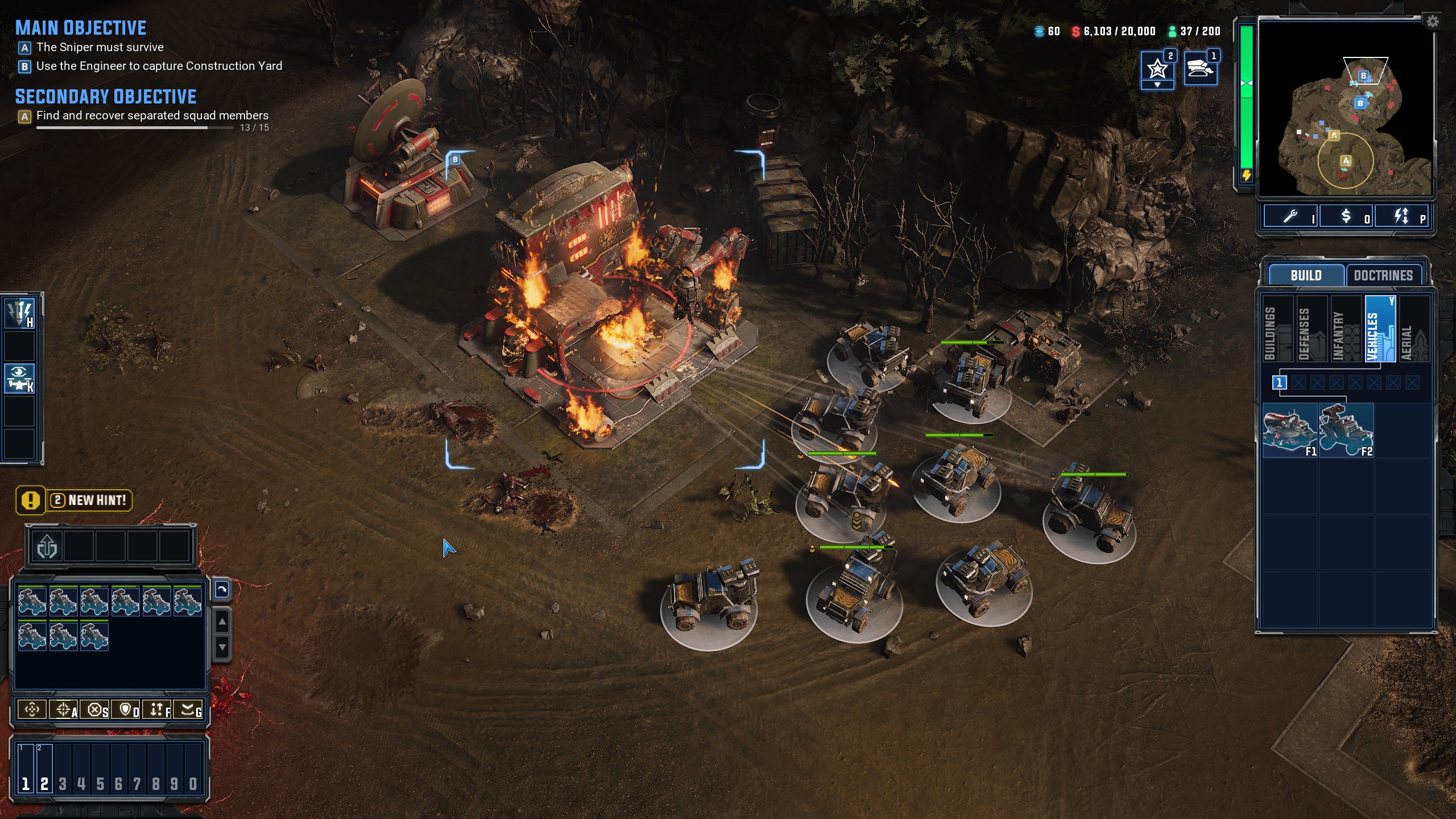
Slipgate understands how to craft exciting mission concepts out of the basic RTS toolkit, and Tempest Rising has that same immediacy and boldness that makes the old C&C games still fun to play thirty years on. This culminates in a dramatically different final act for both campaigns, one where you battle against a third faction known as the Veti, which function in a wholly different manner from the Dynasty and the GDF. I won't go into too many specifics about the Veti, apart from to say they are quite scarily powerful and have some units that make the Dynasty's crushing spheres look boring. In any case, their arrival into the campaigns gives them a real shot in the arm. Indeed, the final mission of the GDF campaign ended with me completely and utterly beaten—I was saved only by the clock.
Slipgate understands how to craft exciting mission concepts out of the basic RTS toolkit
As a package, Tempest Rising is pretty neat and tidy, with no glaring flaws I could point to. There are a few areas where I think it could be better, however. While the third faction is present in the campaign, you can't play as them yet in multiplayer or skirmishes—they're planned for a future update. And while I wouldn't say I'm disappointed by this as such, a third campaign centred around the Veti would certainly help Tempest Rising stand apart from its inspiration.
Elsewhere, the fact the campaigns have the same general trajectory means whichever one you play second won't have the same impact as the first. Finally, the inter-mission briefings are a welcome callback to C&C, but the real time 3D characters simply don't have the charm of Westwood's lovably daft FMVs.
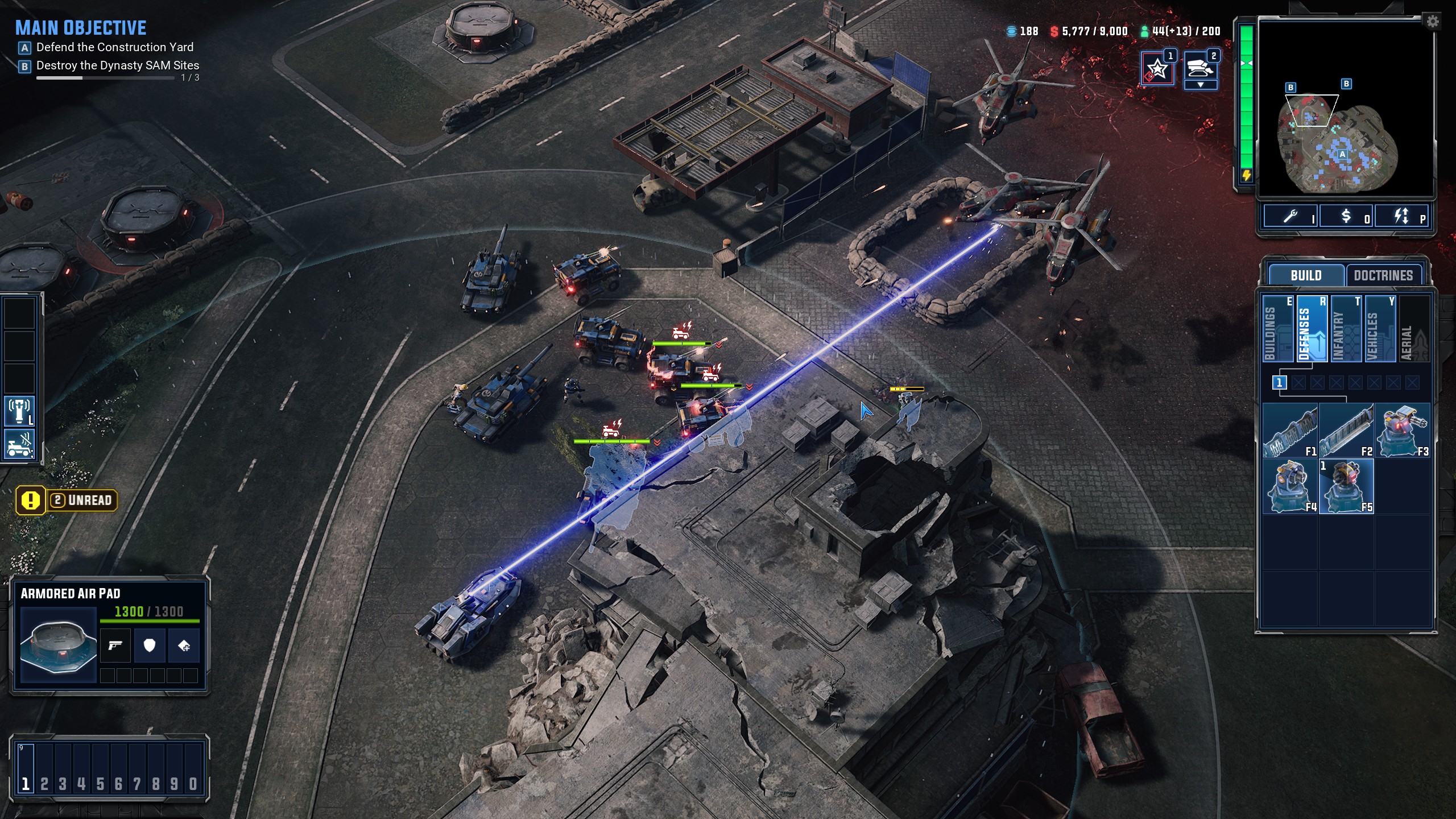
This is the only area where the presentation falls short. Tempest Rising looks great in motion, with your vehicles kicking up dust as they roll across terrain, destroyed buildings collapsing in big, soupy explosions, and aircraft spinning out of the sky when shot down. Arguably more important, however, is that it sounds fantastic. Not only is the game itself sufficiently thunderous, the soundtrack is absolutely tremendous, with an array of musicians paying gleeful tribute to the music of C&C. Standout tracks include Death Squad, a Mick Gordon-ish spin on Red Alert's Hell March, a pulsing, Rammstein-like synth affair named Aegis and a metal Soviet anthem written by former Witcher composer Adam Skorupa. And of course, there's a bit of Frank Klepacki in there, as a treat.
Short of that third playable faction and a few more personable faces between missions, Tempest Rising is as good as you could hope a C&C successor to be. I say this with enthusiasm, but also some relief. The RTS has been in active retreat for years now, with strategy gaming pushing overwhelmingly toward turn-based tactics and grander 4X affairs. There have been several attempted counteroffensives, but none have succeeded.
Rather than try any bold new gambits, Tempest Rising digs its heels in, mounting a stalwart defence of everything that made the RTS great in the first place. It may not revolutionise the genre, but apart from that, Tempest Rising is exactly what the RTS needs right now.







